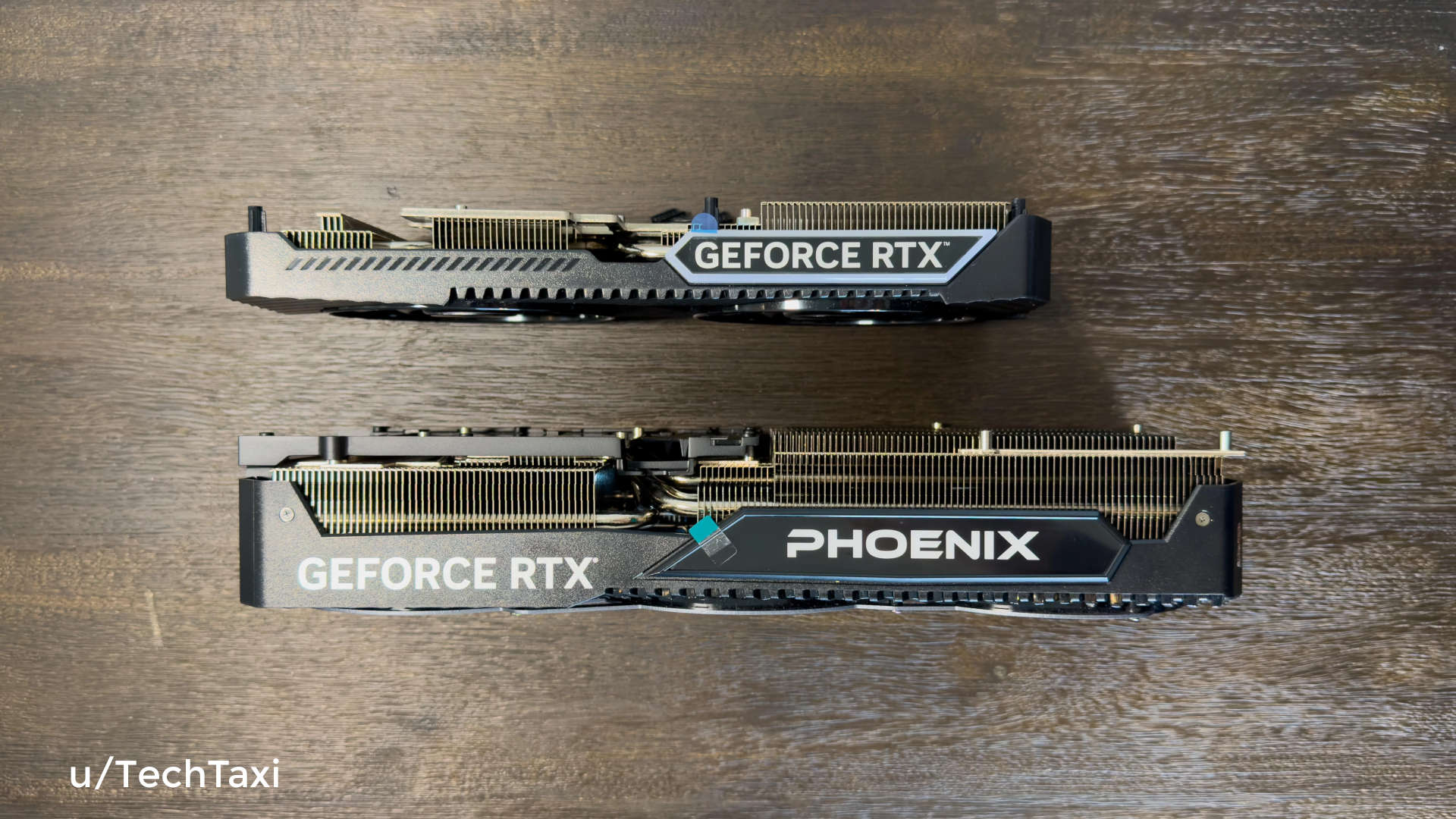Graphics card modder shows AIB vendors you really can have a dual slot RTX 4080
So if he can do it, there's no excuse for the big manufacturers not to do the same.

If you love the performance of Nvidia's latest RTX graphics cards but hate the fact they're all flipping huge, then you're not alone. One inventive Reddit user decided to take matters into their own hands (and a CNC miller) to make their dream of a svelte, dual slot RTX 4080 come true.
The one thing the majority of Ada Lovelace graphics cards have is the size of the heatsink—they're absolutely massive, especially on the top-end models, like the RTX 4070 Ti, RTX 4080, and RTX 4090. It makes sense with the latter, as it can easily use 450W or more during gaming, but the other two have much lower power figures.
The RTX 4080 has an official TGP (total graphics power) of 320W but there are plenty of third party models on the market that sport RTX 4090-sized coolers. If it's not using anything like the same power, there's no real need for the heatsink to be that large.
So Reddit user TechTaxi took matters into their own hands by performing some nifty surgery, transplanting the cooling system from a Gainward RTX 4070 Ghost OC card onto the circuit board of a Gainward RTX 4080 Phoenix GS.
Sounds simple, yes? Definitely not, as the cooler from the smaller card didn't quite fit the bigger PCB. Mounting holes all nicely lined up, but there wasn't quite enough room underneath the heatsink for some of the components.
Cue a spot of milling with a small CNC unit and bingo–one RTX 4080 with an RTX 4070-sized cooling system. TechTaxi then used a PTM7950 thermal pad on the GPU die and Upsiren UX Pro thermal putty on the VRMs and VRAM to improve heat transfer. Using a smaller heatsink invariably means higher temperatures but his figures were more than acceptable–just 70C for the GPU, 81C for the chip's hotspot, and 65C for the VRAM.

Now, these were achieved by setting the fans to a constant 100% rpm, for consistency across testing (you can check the full details of it all here). So the temperatures would be higher with lower fan rates and even as they are, that's hotter than what we saw with a Founders Edition RTX 4080 in our testing.
Keep up to date with the most important stories and the best deals, as picked by the PC Gamer team.
However, that card has a triple-slot cooler and TechTaxi was able another 5°C to 10°C off those numbers when testing his creation with a 75% power limit that had marginal decreases in performance. I've experienced the same thing on my RTX 4070 Ti and the decrease in peak performance is a good trade for the reduction in temperature and fan noise, as a result. Even if the Redditor's modification needs the power limit drop to maintain the same temperatures as a normal RTX 4080, the much smaller size more than makes up for it.
Hulking big graphics cards look cool and all that jazz, but not everyone has a PC case that can easily take them. I'm actually a bit surprised AIB vendors haven't done a similar thing as TechTaxi, as smaller coolers are cheaper to manufacture. The difference is only likely to be a few cents but multiply that by the number of cards shipped and it definitely adds up.
I kind of miss the era when top-end graphics cards were all single slot but I also accept the fact that as power levels have risen, the coolers have needed to be larger too. But as this endeavour shows, they really don't need to be as big as they are.
Best CPU for gaming: Top chips from Intel and AMD.
Best gaming motherboard: The right boards.
Best graphics card: Your perfect pixel-pusher awaits.
Best SSD for gaming: Get into the game first.

Nick, gaming, and computers all first met in 1981, with the love affair starting on a Sinclair ZX81 in kit form and a book on ZX Basic. He ended up becoming a physics and IT teacher, but by the late 1990s decided it was time to cut his teeth writing for a long defunct UK tech site. He went on to do the same at Madonion, helping to write the help files for 3DMark and PCMark. After a short stint working at Beyond3D.com, Nick joined Futuremark (MadOnion rebranded) full-time, as editor-in-chief for its gaming and hardware section, YouGamers. After the site shutdown, he became an engineering and computing lecturer for many years, but missed the writing bug. Cue four years at TechSpot.com and over 100 long articles on anything and everything. He freely admits to being far too obsessed with GPUs and open world grindy RPGs, but who isn't these days?


